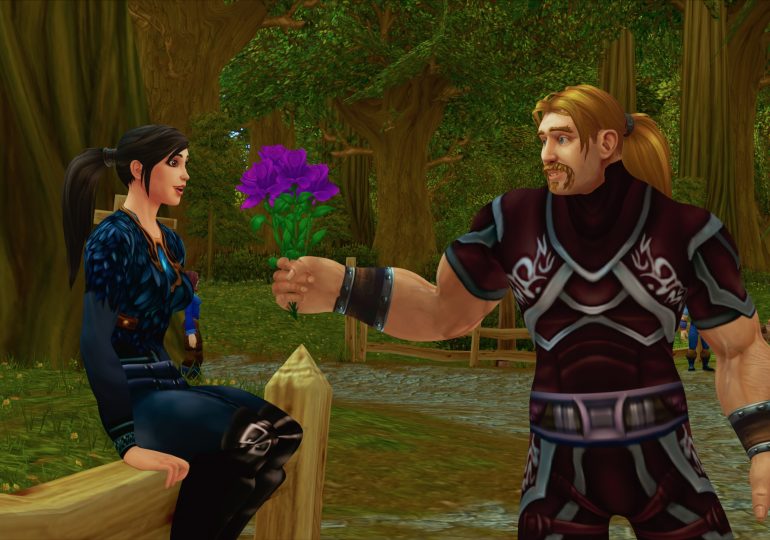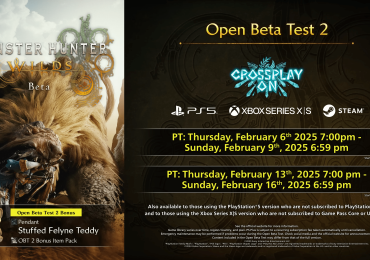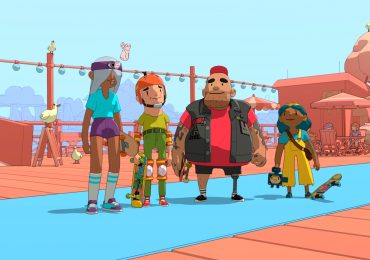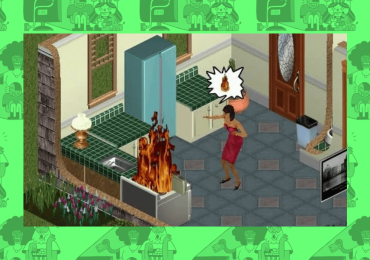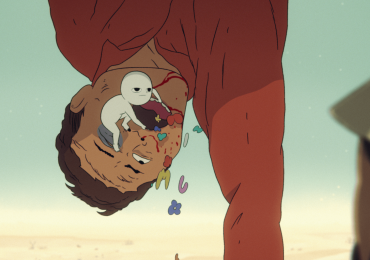The Remarkable Life of Ibelin, now streaming on Netflix, is one movie nested inside another. The outer movie is a sensitive, moving documentary about Mats Steen, a Norwegian World of Warcraft player who died of a degenerative muscular disease at age 25. Within that is a more humorous, colorful, but still deeply felt animated movie capturing the adventures, friendships, crushes, and guild drama Steen experienced online with his character Ibelin — a rakish, mustachioed ladies’ man.
The animation, rendered using authentic in-game WoW models, is more than just a gimmick. As Steen’s condition and its attendant mental health challenges pushed him to retreat from the real world, his life within WoW and his role-playing guild, Starlight, became the core of his existence — something his parents discovered only after his death. The contrast between these richly animated sequences and the home video of Mats sitting nearly immobile at his computer is simultaneously heartrending and uplifting. The animation is the only way to capture the totality of his life: The movie explores how the virtual setting let him experience physical freedom, romantic connections, and a deep sense of community he wasn’t able to enjoy in the real world.
Watching Ibelin, I assumed WoW developer Blizzard must somehow have been involved in its making — the quality of the animation is so high, and it’s so authentic to the game’s world. But director Benjamin Ree and animator Rasmus Tukia told me they actually put off contacting Blizzard until their film was nearly finished. Ree and producer Ingvil Giske had been working on the film for three years before they reached out to the game studio at all.
“We wrote them an email saying that we’re a small Norwegian production company, we made this film,” said Ree, laughing. “Can we use your IP, your world, for free and without any involvement from you?” Ree said Giske called this doing things “the Norwegian way” — “We just took the rights and tried to ask for forgiveness afterwards.”
Blizzard invited the filmmakers to its offices in California for a high-stakes screening. Giske was relaxed, but Ree, who calls himself “very neurotic,” took extra doses of asthma medication “in order to breathe” before the meeting. He needn’t have worried. “We showed them the film and then one of the bosses turned around to us, and he was crying. He said, ‘It’s a fantastic film and you will get the rights to use [whatever you need].’”
Tukia had been nervous, too, although he knew from experience that Blizzard is surprisingly liberal compared to some other companies when it comes to use of its assets. He’s a member of WoW’s machinima fan animation community, which Blizzard has traditionally supported. “They’ve always been supportive of us, of anyone using their assets, and that extends to their music as well,” he said. “They won’t come with these copyright infringement [takedowns] or whatever, because I think in the end it kind of helps them promote their game.”
Tukia started playing World of Warcraft in 2005, when he was 12, and not long after, he was using the game to make simple animated videos for his YouTube channel. Around 2015, he discovered the software the community created to export the assets they want to use from the game files to use in animation programs like Maya. The quality of Tukia’s output suddenly leveled up; he went from making crude faux music videos to slickly edited, character-driven short stories.
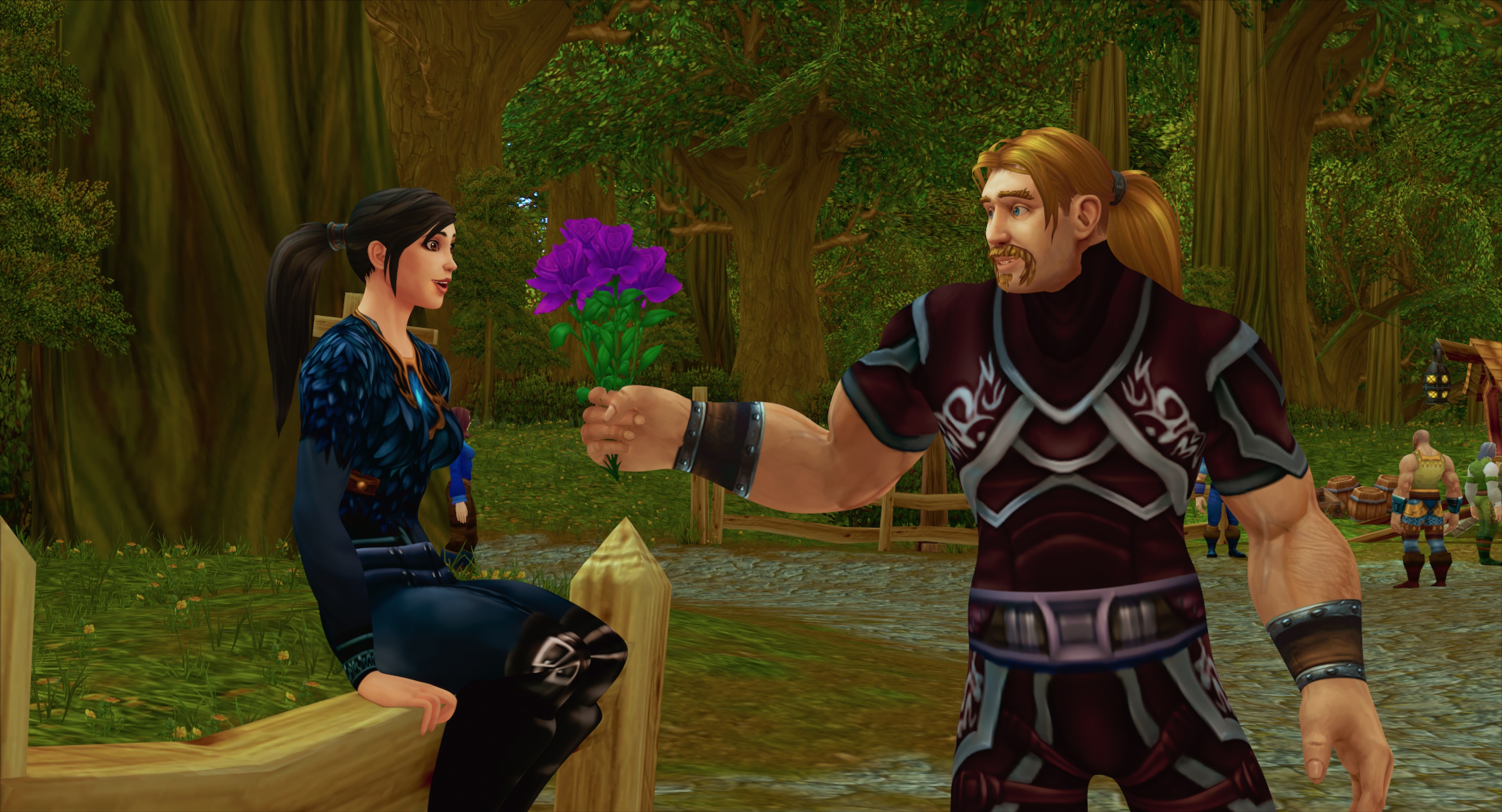
Ree found those videos when he was researching ways to visualize Steen’s online life. He had an amazing resource to work from: Starlight provided Steen’s family with 42,000 pages of role-playing logs, character diaries, forum posts, and out-of-character chat logs, illustrating the relationships Steen had built as part of his extensive online fantasy life.
Ree knew this archive held a universal story, and he just needed an accessible way to tell it. “I saw it was almost like a coming-of-age story there, and I could recognize a lot of the things Mats had experienced through Ibelin inside of World of Warcraft,” he said. “My goal was that my 94-year-old grandmother would feel included into this world, but at the same time [we would] make a representation of the game that [WoW players] would feel was representative.”
The humorous, sometimes sentimental tone of Tukia’s videos and his fondness for expressive close-ups on characters’ faces were just right. “We thought that his YouTube channel was amazing. It felt very truthful to the game,” Ree said. He journeyed from Norway to Tukia’s native Sweden, expecting to meet at the offices of a small animation company. Instead, he found himself at Tukia’s parents’ house, pitching the film over a dinner of Tukia’s mother’s lasagna.
“I was very moved, and it didn’t take a lot of convincing for me to join,” Tukia remembered. “The fact that they wanted me to have my hands [on] animating someone’s life […] I mean, the world is fictional, but the settings and the people there are very much real. So I just found it such an honor to get the role of animating real people, based on real events. I took that very seriously. I really didn’t want to misrepresent anyone.”
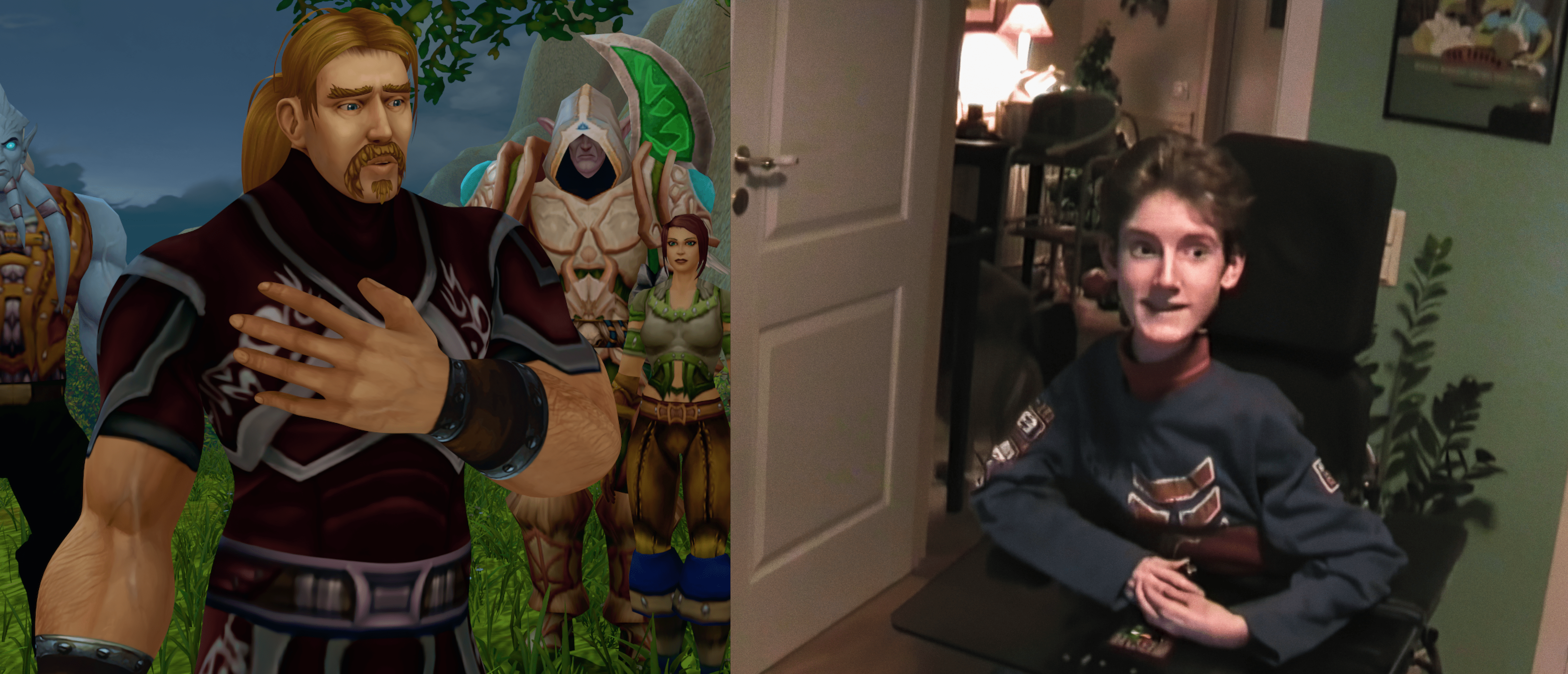
A large proportion of The Remarkable Life of Ibelin’s run time is animated, but Tukia worked mostly alone, animating all the key characters, doing the camera work, and editing his segments; two other YouTubers helped out with background characters, rigging, and rendering. (According to Ree, the only help Blizzard provided was to supply a leveled-up character so the team could capture some actual in-game footage to use alongside the animation.)
Tukia resisted the temptation to apply too much gloss to the WoW world in developing his own animation. “I mean, the whole movie is about authenticity, in the end,” he said. “We could have gone the way of just enhancing, making the lighting look super good, and all the textures we could have uprezzed, but it wouldn’t really have felt authentic to the material. We really just wanted it not to look like a movie, but like a game represented as a movie.”
Authenticity to World of Warcraft was one concern, but it was even more important that the animation would be truthful to Steen’s and his guildmates’ storytelling, and their self-expressions within the game. Fortunately, their text role-playing was highly specific and illustrative.
“What’s fascinating about their kind of role-play is that they write such detailed descriptions, also about actions and character emotions,” Ree said. “So Mats would write for Ibelin, like, ‘Ibelin seems sincere yet saddened.’ And this gave us a lot of possibilities to creatively interpret that writing, that role-play.”
The filmmakers consulted with Starlight’s members throughout, so they were confident they would get the guild’s approval when they finally screened the film for them. “They had one comment that they felt was a mistake, and that was that a lot of the women Ibelin was interested in, they usually wore more… leathery clothes,” he laughed. “So after that feedback, we went back again and we changed some of the clothes to the female characters to give them more leather. After that, we locked the edit.”
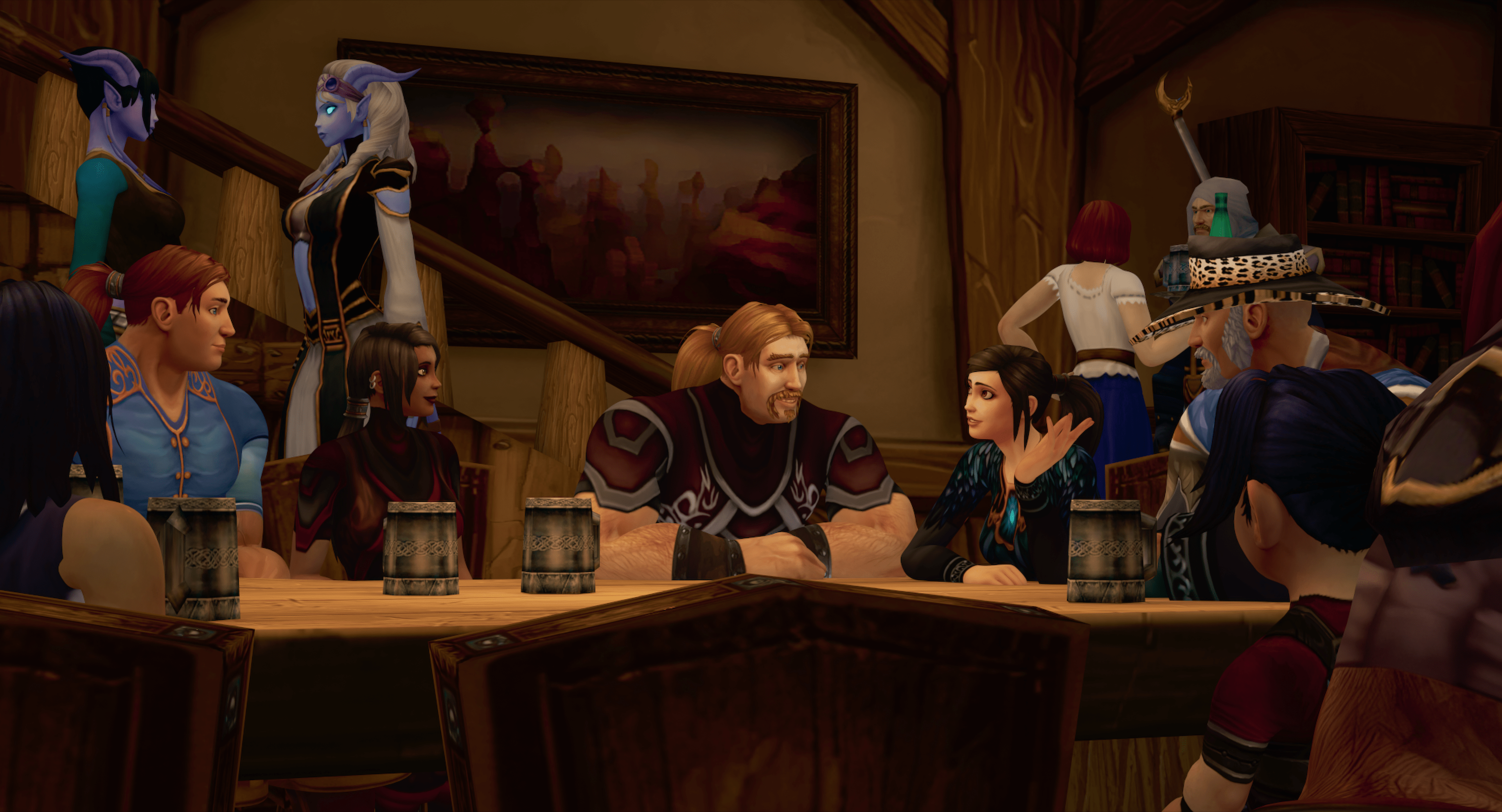
Image: Netflix
Tukia says his favorite scene in the movie is a montage showing the flirtation — within the role-play, but perhaps a little bit beyond it as well — between Ibelin/Mats and a character called Rumor, played by a guild member called Lisette.
“It kind of signifies a little bit of playfulness, but also this first crush type of feeling,” Tukia said. “And you see that [Mats] gets into this… It’s the epitome of his happiness, in a way. In the film, he likes to run, because that’s his way of showing that his chains are broken. And for him to actually run with Rumor, inviting her to run with him, I think that was really beautiful.”
This fragile, illusory, but emotionally very real world is one Tukia recognizes, because it’s a world he comes from. “I met my partner online,” he said. “The YouTube team that I do videos with, I met them online, too. So in a way, most of my life has revolved around meeting people online. I obviously didn’t have [Mats’] handicap, but I think most gamers can see themselves somehow in his situation as well.”
For Ree, the world Steen and his guild shared was both foreign and kind of nostalgic — a reminder of the kinds of friendships he formed at an earlier time in his life. “The main thing that I’ve been thinking a lot about after making this film is the value of spending a lot of time together, and that is what I envy a lot,” Ree said. “When I look at Mats and his friends, they spent, like, five hours every day hanging. It was very similar to the feeling of being a child, when I [would] just run up to the neighbor and we were just hanging. We had time to just stay together. It also shows why around 50 people wrote to Mats’ parents after he passed away, about what he had meant to them. Mats changed so many people’s lives.”
The Remarkable Life of Ibelin is streaming on Netflix now.
